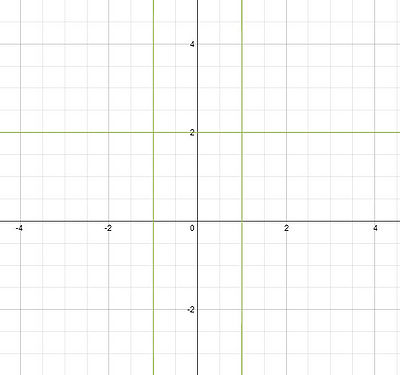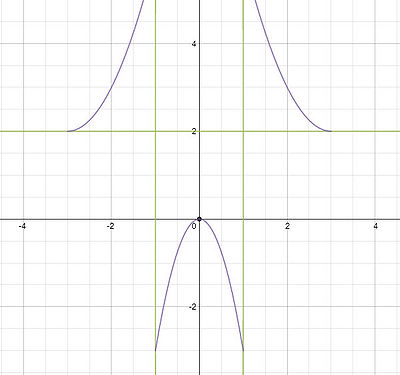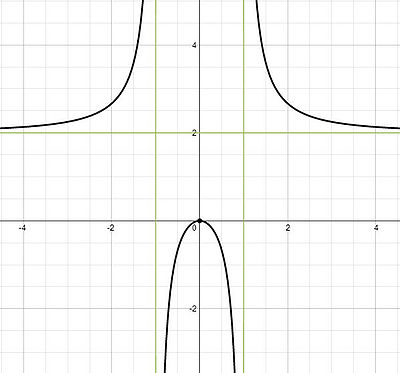Science:Math Exam Resources/Courses/MATH110/April 2012/Question 05 (g)
{{#incat:MER QGQ flag|{{#incat:MER QGH flag|{{#incat:MER QGS flag|}}}}}}
• Q1 • Q2 (a) • Q2 (b) • Q3 (a) • Q3 (b) • Q4 • Q5 (a) • Q5 (b) • Q5 (c) • Q5 (d) • Q5 (e) • Q5 (f) • Q5 (g) • Q6 (a) • Q6 (b) • Q7 • Q8 • Q9 •
Question 05 (g) |
|---|
|
Let (g) Make a large sketch of the graph of ƒ, indicating all you have found in the previous parts of the question. |
|
Make sure you understand the problem fully: What is the question asking you to do? Are there specific conditions or constraints that you should take note of? How will you know if your answer is correct from your work only? Can you rephrase the question in your own words in a way that makes sense to you? |
|
If you are stuck, check the hint below. Consider it for a while. Does it give you a new idea on how to approach the problem? If so, try it! |
Hint |
|---|
|
By now you should have several pieces of information about the function: intercepts, asymptotes, etc. Try drawing the asymptotes, then determine where the function is increasing and decreasing. Use information about the intercepts and concavity to finish the graph. |
|
Checking a solution serves two purposes: helping you if, after having used the hint, you still are stuck on the problem; or if you have solved the problem and would like to check your work.
|
Solution |
|---|
|
As suggested in the hint, we start by drawing the vertical and horizontal asymptotes. The vertical asymptotes are , and the horizontal asymptote is . We know that the function increases to the left of , increases again between -1 and 0, and then decreases from 0 to 1, and then again after . Furthermore, the graph must go through the x-axis at the point (0,0) but not anywhere else. This suggests the following picture: Confirming that this picture matches the concavity found in part ƒ (concave up outside of (-1,1), concave up inside (-1,1)), we we arrive at the final sketch: |
{{#incat:MER CT flag||
}}







